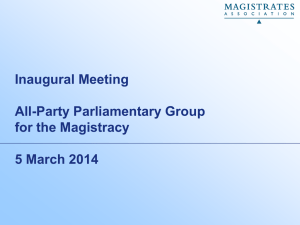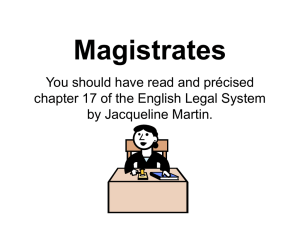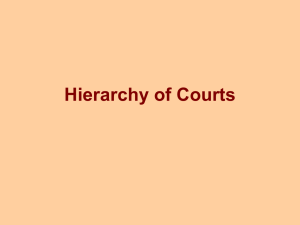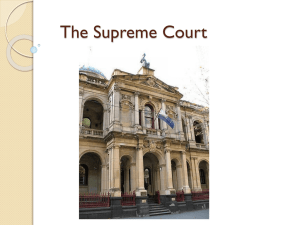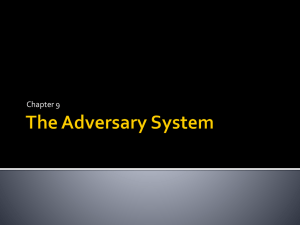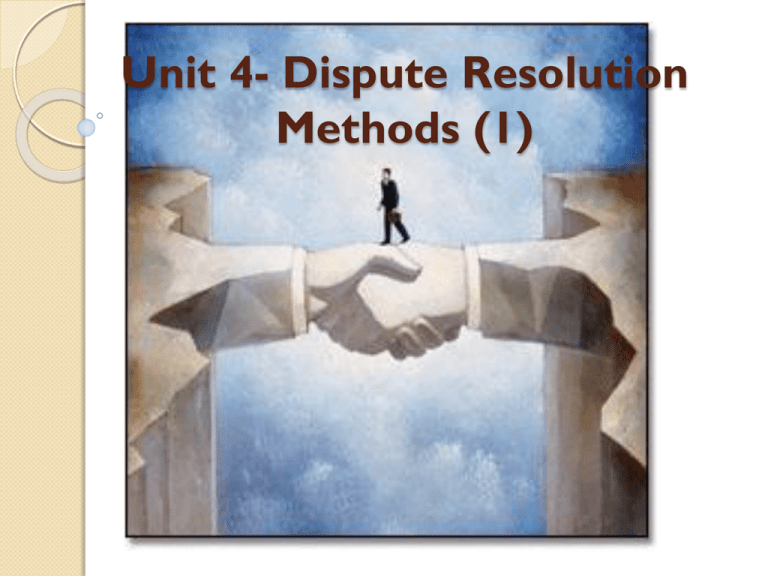
Unit 4- Dispute Resolution
Methods (1)
Types of Disputes
There are two main types of legal dispute:
criminal and civil.
Criminal law includes offences against the
person, property, state, legal system and
morality.
Civil law includes the law of contract,
consumer law and torts.
In some instances, a specific dispute or legal
problem may fall within both criminal and
civil law. Case example; the death of
Australian cricketer and radio broadcaster
David Hookes.
David Hookes Case Study
The death of former Australian cricketer David
Hookes had both criminal and civil implications.
Hookes had been drinking at the Beaconsfield
Hotel, St Kilda, following his team’s one-day win
over the South Australian cricket team.
He was allegedly punched in the head by a
bouncer outside the hotel and died in the Alfred
Hospital the following day.
The bouncer was committed to stand trial for
manslaughter. A Supreme Court jury found him
not guilty.
David Hookes’ widow, Robyn Hookes, lodged a
writ suing the bouncer, the agency that employed
him and the owners of the hotel, for a loss of at
least $175 000 in annual income.
The writ alleged that hotel staff ‘allowed’ and
‘encouraged’ the bouncer to assault Hookes after
he was evicted from the hotel. The writ also
alleged that the hotel employed security staff who
were not appropriately trained, who had
inappropriate temperaments and who were likely
to incite and engage in violent acts.
Robyn Hookes claimed that her husband was
forcibly removed from the hotel by security staff
and was followed and assaulted. She alleged that
the hotel had a responsibility to ensure that he
was ‘not unreasonably exposed to the risk of
injury’. The claim was resolved by an out-of-court
settlement for an undisclosed amount.
Criminal Actions
1)
2)
3)
A criminal action generally involves an offender—referred to as the
‘accused’ or the ‘defendant’— and a victim.
However, criminal legal proceedings occur between an individual
who is accused of committing a criminal offence and the state.
The reason for the state initiating criminal proceedings against the
accused individual is that a criminal offence not only harms the
victim but potentially endangers the community.
Purpose of criminal law
The purpose of criminal proceedings is to sanction the accused and
protect society. Their effect is to enforce the values of society.
Usually, a person will only be arrested if:
they have been caught in the act of committing an offence
there are reasonable grounds to believe that they may abscond
they constitute a danger to the community.
Civil Actions
Civil disputes usually involve two or more private individuals.
Civil actions arise from torts and breaches of contract. The
‘law of torts’ is a term for civil wrongs.
The main areas are negligence, trespass, nuisance and
defamation.
Purpose of civil law
The intention of the legal action is to remedy a civil wrong.
The remedy restores the complainant or plaintiff to their
position prior to the infringement or breach.
Civil actions
Civil actions arise when one person believes another person
has violated their civil rights.
Look carefully at the cartoon and identify the different types of dispute illustrated.
Will
these disputes be treated as civil or criminal matters?
Courts
Each court has its own jurisdiction., meaning power to hear and
determine a dispute.
The Magistrates’ Court deals with minor cases, while the Supreme
Court deals exclusively with the most serious matters., such as murder.
Most courts within the Victorian hierarchy exercise both civil and
criminal jurisdiction.
That is, most courts can hear either criminal or civil disputes.
Some courts possess only original jurisdiction: they can hear a
case only on the first occasion and therefore cannot hear cases
on appeal.
Superior courts have appellate jurisdiction, meaning that they can
hear appeal cases.
Juries are used only in the County Court and the Supreme Court.
Reasons for a Court Hierarchy
Imagine the problems of having just one
court to deal with all matters, irrespective of
the nature of the dispute, its seriousness, the
amount of money involved and so on.
First, there would be much longer delays.
The right to appeal is an important feature
of our legal system, as it gives an individual
the opportunity to have their case
determined in another court, thereby
ensuring certainty, consistency and fairness.
Reasons for a court hierarchy?
1)
Specialisation- Each court is limited to a specific area of jurisdiction in which it can
develop expertise. The judge or magistrate in each court can develop a specialised
understanding of the law with respect to the types of cases that are determined in that
particular court. A judge in the Family Court, for instance, can become fully conversant
with matters relating to family law.
2)
Precedent- The doctrine of judicial precedent is largely dependent on a hierarchy of
courts. Precedents are established in the superior courts. The decision of the superior
court is binding on all courts lower in the hierarchy. An important advantage of the
doctrine of precedent is that it provides for consistency.
3)
Appeals- The right of appeal is seen as fundamental to the concept of justice. Appeals
would not be possible without a court hierarchy. People who believe that they have
grounds for an appeal would not have the opportunity to have their case heard again in
a superior court by a judge with special knowledge and expertise.
4)
Administrative convenience- A hierarchy of courts is administratively convenient
because it reduces the likelihood of delays by providing a means of allocating cases
according to their seriousness and complexity. Minor cases can be allocated to the
lower courts where they can be heard relatively quickly. More complex matters
generally take longer to hear. These cases are heard in higher courts by judges with the
expertise to deal with such matters
Reasons for a court hierarchy??
5) Time and money- Litigation is a costly and timeconsuming process. A court hierarchy enables minor matters
to be dealt with relatively quickly and inexpensively in the
Magistrates’ Court rather than having them resolved in the
County Court or Supreme Court, where it may cost
thousands of dollars and take years before the case is finally
determined by the court.
6) Expertise and experience- A court hierarchy enables
more serious, difficult, technical or complex cases to be
heard by experienced and specially qualified judges.
Cases concerning murder are heard in the Supreme Court.
Supreme Court judges have many years of experience as
lawyers before their appointment.
Problems with a court hierarchy
Read from page 254-255 and summarise
in your own words the problems with a
court hierarchy and state three
advantages and three disadvantages of a
court hierarchy.
‘Critically evaluate the need for a court
hierarchy’.
Magistrates Court
The Magistrates’ Court is presided over by a
magistrate.
In Victoria, the Magistrates’ Court is the lowest
court in the hierarchy.
It has original jurisdiction over summary, minor
civil and criminal matters, indictable offences tried
summarily, committal proceedings, warrants and
civil claims to the value of $100,000.
The Magistrates’ Court is responsible for
processing 95 per cent of all criminal cases and
90 per cent of all civil cases.
The Magistrates’ Court cannot hear appeals.
Magistrates Court- Civil
Proceedings
Civil proceedings
The Magistrates’ Court has the power to hear civil claims up to $100 000.
There are a variety of dispute settlement methods that can be used in the
Magistrates’ Court to settle civil disputes. These methods include conciliation
and arbitration.
Conciliation
Pre-hearing conferences in the Magistrates’ Court use a process of conciliation.
Parties to a dispute may apply to have a pre-hearing conference. Magistrates or
registrars may also refer cases to a pre-trial hearing. A pre-trial hearing will be
used when the court believes that it will encourage an out-of-court settlement
or if there are complex issues that can be resolved before a court hearing.
Arbitration
Civil cases in which the compensation claimed is less than $10 000 must be
heard by arbitration. Arbitration is a less formal hearing, conducted by a
registrar, and is not bound by the rules of evidence. Legal representation is
allowed, but is discouraged. In some cases another person, such as an agent, can
appear on behalf of the complainant. The decision of the arbitrator is final and
binding.
If a settlement cannot be reached, the case will be referred to the court.
Magistrates Court- Criminal
Proceedings
1)
2)
3)
4)
5)
The Magistrates’ Court hears criminal matters in relation to the
following:
● summary offences
● indictable offences tried summarily
● committal proceedings.
The Magistrates’ Court can hear a diverse range of criminal
offences as either summary offences or indictable offences heard
summarily. The Magistrates’ Court does not have jurisdiction to
hear:
sex offences where there has been penetration
armed robbery or aggravated armed robbery
trafficking in large quantities of drugs
murder, attempted murder and manslaughter
individual offences of theft of property in excess of $25 000
(with the exception of car theft).
Magistrates Court- Criminal
Proceedings
1)
2)
3)
Summary offences
All summary offences are heard in the Magistrates’ Court. Summary offences are minor
offences, such as traffic offences—speeding, not stopping at a red light, exceeding a blood
alcohol content of 0.05—as well as such offences as being drunk and disorderly, and minor
(common) assault. There is no right to a trial by judge and jury for these offences.
Indictable offences heard summarily
With the consent of the defendant, some indictable offences may be heard summarily in the
Magistrates’ Court by a magistrate. The indictable offences that may be heard using the
summary procedures in a Magistrates’ Court are offences drugs, robbery, burglary and handling
stolen goods, punishable by terms of imprisonment up to 10 years or a maximum fine of 1200
penalty units.
For an indictable offence to be tried summarily, three elements must be satisfied:
the prosecutor or the defendant must apply to have the case dealt with summarily, or the
court must decide to deal with the matter summarily.
the court must be satisfied that the matter is suitable to be determined summarily;
the defendant must consent to the court dealing with the matter summarily; on day of the
hearing, the court will ask the defendant: ‘Do you consent that the charge against you shall
be tried by us or do you desire that it shall be sent to trial by a jury?’
Magistrates Court
Why have your case heard in the Magistrates’ Court?
1)
The matter will be dealt with relatively quickly and inexpensively, as compared to being
tried in the County Court.
2)
If the defendant is found guilty by the court, the maximum penalty that can be issued by a
Magistrates’ Court is less than the maximum penalty that a judge of the County Court
can hand down.
3)
The Magistrates’ Court is less formal than the County Court. While representation by a
lawyer is advisable,
Committal Hearing
Before the case is brought to trial, a committal is conducted in the Magistrates’ Court to
determine whether there is a case against the defendant.The hearing is an investigation
conducted to establish whether there is sufficient evidence to support a conviction by a jury
in the County or the Supreme Court.
Hearings are held to save time and money. If there is insufficient evidence against the
defendant to justify the case being sent to trial in a higher court, then the case is dismissed
and time and money are not wasted on a trial.
If a magistrate believes there is sufficient evidence to support a conviction, the matter is sent
for trial in a higher court. The accused will be remanded in custody or granted bail pending
the trial before a judge and jury.
Magistrates Court
Warrants
A warrant is a legal document used by the court to authorise a particular act. A warrant to arrest allows a
police officer to arrest and detain a suspect.
The Magistrates’ Court has the power to issue the following types of warrants:
1) warrant to arrest
2) remand warrant
3) search warrant
4) warrant to seize property
5) warrant to imprison
6) warrant to detain in a youth training centre
7) penalty enforcement warrants for unpaid fines.
Bail applications
When a suspect has been taken into custody and charged by the police, the Magistrates’ Court has the power
to hear applications for bail. If an application for bail is not successful, the magistrate will order that an offender
be held in remand. In most instances, a bail justice will decide bail. Judges in the County or Supreme Court also
can hear bail applications.
Family law and family violence
Under the Family Law Act 1975 (Cth) the Victorian Magistrates’ Court has jurisdiction to deal with matters
concerning:
● child and spouse maintenance
● contact and residence orders
Under the Marriage Act 1961 (Cth) the court can hear applications for minors to marry.
Applications for intervention orders to protect individuals from family violence or stalking are heard in the
Magistrates’ Court.
Diversion Programs in Magistrates
Court
1)
2)
3)
4)
5)
The Magistrates court and the Children’s court provide
diversion programs for first-time offenders.
Provide offenders with the opportunity to avoid a criminal
record.
Offenders are required to do something appropriate which is
aimed at making amends to the victim or assisting the offender
to avoid re-offending.
Before diversion can be recommended, the following must be
met:
The offence is able to be hear summarily
The offence is not subject to a minimum or fixed sentence or
penalty
The accused acknowledges responsibility for the offence
There is sufficient evidence to gain a conviction
A diversion is appropriate in the circumstances.
Appeals in the Magistrates Court
The Magistrates’ Court is the lowest court
in the Victorian court hierarchy. It therefore
has no power to hear appeals from any
other court.
Criminal appeals
In criminal cases, the County Court can hear
appeals against a decision made by a
magistrate.
The director of public prosecutions may, for
instance, appeal against the leniency of a
sentence handed down by a magistrate.
Appeals in the Magistrates Court
1)
2)
3)
In hearing an appeal from a Magistrates’ Court in a criminal case the County Court may decide
to:
reduce the sentence
increase the sentence
set aside the conviction and dismiss the case.
Either party may appeal to the Supreme Court on a point of law. In most instances a single
justice of the Supreme Court (not the Court of Appeal) will hear the appeal. The judge in the
Supreme Court may decide to:
1)
discharge the appeal and allow the decision of the magistrate to stand
2)
decide that the decision of the magistrate was an error in law and quash or overturn the
magistrate’s decision
3)
send the matter back to the Magistrates’ Court directing the magistrate to apply the law as
stated by the Supreme Court.
1)
2)
3)
Civil appeals
The only right of appeal for a civil case heard in the Magistrates’ Court is an appeal on a point
of law to the Supreme Court. In the case of such an appeal, the Supreme Court can:
affirm the decision
reverse the decision
send the case back to the Magistrates’ Court and direct that the magistrate apply the law as
decided in the Supreme Court.
10 most common offences heard by
the Magistrates Court in 2008-09
1)
2)
3)
4)
5)
6)
7)
8)
9)
10)
Theft - 26 613
Driving while disqualified/suspended/cancelled- 15
572
Drunk in a public place- 11 943
Obtaining property by deception- 10 253
Exceeding the prescribed concentration of alcohol
within 3 hours of breath test- 8613
Exceeding signed speed limit- 8 578
Driving unregistered vehicle in toll zone- 8 413
Using unregistered vehicle/trailer on highway- 6 989
Failing to answer bail- 6 590
Possessing a drug of dependence - 6 504
Question time
1)Outline the criminal and civil jurisdiction of the
Magistrates’ Court.
2) What is a court hierarchy? Why are courts arranged
in a hierarchical structure?
3)What is the place of the Magistrates’ Court in the
Victorian court hierarchy?
4) Outline the appeal process of the Magistrates court.
5) What other matters can the Magistrates Court hear?
6) Define ‘original jurisdiction’ and ‘appellate
jurisdiction’.
Complete questions 1-8 on page 264 of your text book.

